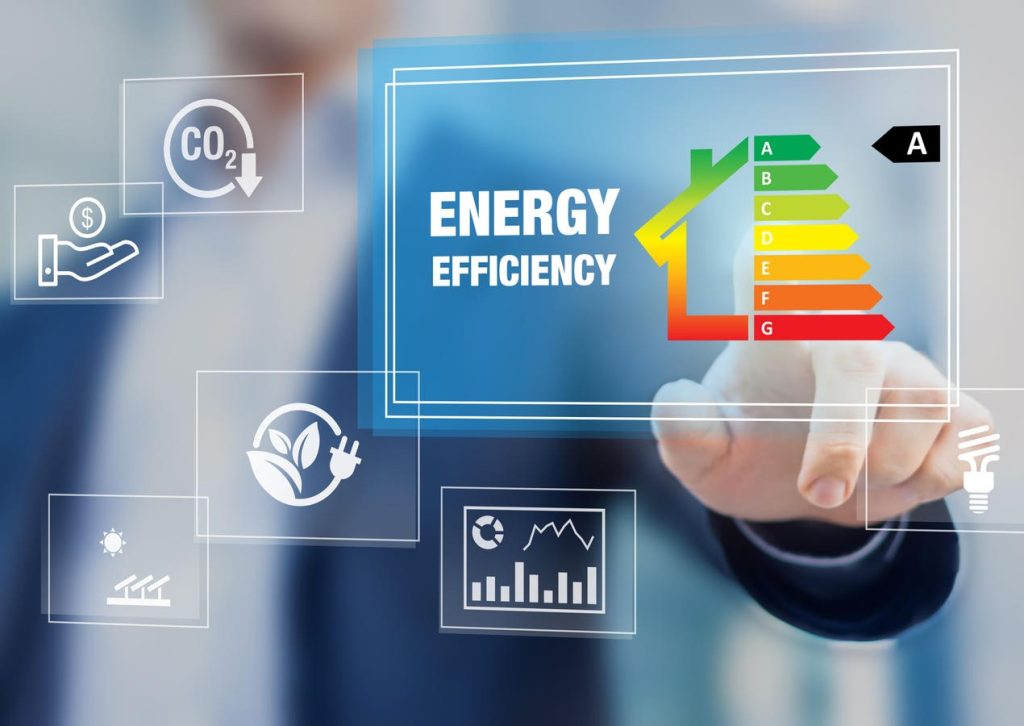In today’s climate-conscious investment landscape, the commercial real estate sector is more dedicated than ever to adopting sustainable practices. Leading companies have made sustainability and energy efficiency key parts of their identity, which not only drives their purpose but also adds substantial value through advanced energy management and efforts to reduce greenhouse gas emissions.
Forward-thinking CRE firms are not only integrating sustainability and resilience into their operational ethos but are also pioneering innovations that ensure the longevity and resilience of their property portfolios. With the climate becoming more unpredictable, real estate assets demand strategic foresight to maintain value and functionality. Looking at energy efficiency and decarbonization as an investment rather than a cost is a major shift in perspective. This approach demonstrates that sustainable practices can significantly reduce operating costs, boost property values, and provide protection against volatile energy prices and stringent environmental regulations.
For example, two years following a comprehensive retrofit, the Empire State Building cut its energy consumption by 40% and realized annual savings of $4 million, as reported by Time. This example highlights the significant cost-saving opportunities that deep retrofits can offer, serving as a model now adopted across North America.
Climate-proofing properties involves a tiered process that includes minor, major, and deep retrofits. This comprehensive approach not only boosts energy efficiency and reduces operational costs but also reduces the carbon footprint and enhances the overall resilience of buildings.
Retrofits: A Cost-Effective Starting Point
The journey to sustainability begins with minor retrofits, targeting the “low-hanging fruit” of building improvements. These are low-cost, easy-to-implement measures that yield significant returns for minimal investment. Sealing leaks, improving insulation, and upgrading to advanced lighting and control systems are examples of minor retrofits. These initial steps substantially reduce a building’s energy consumption and provide a quick win that can be built upon, all while causing minimal disruption to building occupants.
Building on the foundation set by minor retrofits, major retrofits take a more holistic view of the building’s performance. This stage involves more significant updates that remain minimally disruptive. Replacing outdated windows and doors enhances thermal performance; upgrading heating, cooling, ventilation and plumbing systems with more efficient and environmentally friendly technology lowers energy use and GHG emissions; and installing sub-metering allows for better management of energy and water consumption. These changes not only improve the building energy and environmental performance but also its attractiveness to potential tenants who are increasingly environmentally conscious.
Maximizing Energy Savings and Resilience
For the most dramatic transformation, deep retrofits involve extensive upgrades that can lead to up to 60% savings in operational costs, according to the Natural Resource Canada. Although these retrofits are the most disruptive, planning them around natural turnover periods or major building lifecycle events minimizes inconvenience. Strategies might include significant structural changes such as reconfiguring interior spaces, replacing roofing with highly insulating or green materials, and introducing advanced heating, ventilation, and air conditioning systems. Incorporating electrification solutions such as air-source or ground-source heat pumps places a building at the forefront of sustainable design and operation.
The integration of minor, major, and deep retrofits into a cohesive strategy allows property owners to scale their improvements in alignment with budgetary allowances and building occupancy cycles. Starting with minor retrofits quickly improves energy efficiency and carbon reduction at a low cost. Once these are in place, the infrastructure and savings generated can support the investment required for major retrofits and deeper decarbonization. Finally, deep retrofits, planned for the long-term horizon, can transform a property into a model of sustainability and resilience, ensuring it remains competitive and compliant with increasing regulatory demands for green buildings.
In conclusion, climate-proofing your property with sustainable upgrades transcends environmental responsibility, representing a strategic economic choice that can increase asset value, reduce operational expenses, and ensure adherence to evolving standards. As the industry increasingly adopts these practices, energy efficiency and decarbonization become integral to modern real estate management, signaling a shift toward a future that is both more resilient and environmentally conscientious.
Read the full article here

